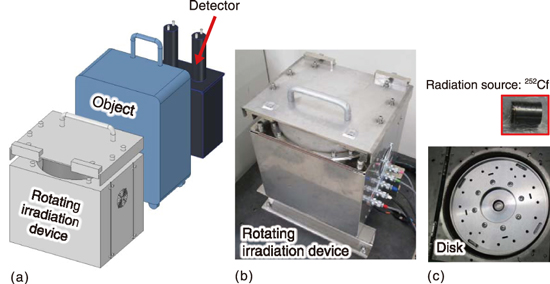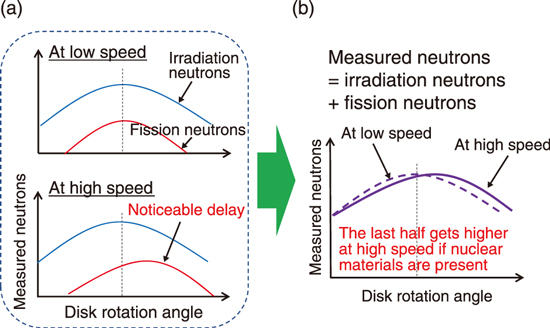
Fig.4-2 (a) Device arrangement, (b) a rotating irradiation device, and (c) a disk and radiation source

Fig.4-3 Schematic of measurements
With the threat of terrorism increasing worldwide, security inspections for radioactive materials are being conducted at airports and ports. Notably, terrorism using nuclear materials is of much concern because of the serious damage it can cause to society, and nuclear material detection equipment for nuclear security is becoming increasingly important. The active method is one of the promising detection methods. In this method, the object containing the nuclear materials is irradiated by radiation, such as neutrons, and nuclear reactions are induced. The system detects nuclear materials by measuring the radiation originating from the nuclear reaction in the object. This method has a superior detection sensitivity and accuracy compared to the passive method. However, the active device has a significant drawback of being massive and expensive because it requires a radiation generator with periodically oscillating intensity.
In this study, we developed a new radiation generator to realize a low-cost and transportable device. In an active device, the intensity of the irradiated radiation must vary periodically. Therefore, we developed an irradiation device in which a radiation source is rotated to periodically change the intensity. Californium-252 (252Cf), which emits neutrons, was used as the radiation source.
The developed irradiation device (Fig.4-2) incorporates a disk (diameter: 31 cm) with a radiation source (252Cf) attached to its periphery. This disk can rotate up to 3,000 times per minute. The irradiation device is much less expensive (about 4 million yen) than the conventional radiation generators (which cost about 30 million yen or more because they use accelerators). In addition, it is compactness (width: 43 cm, depth: 35 cm, and height: 57 cm) allows it to be easily transported as required.
To explain the basic principle of the detection using this rotating irradiation device, the schematics of measurements are shown in Fig.4-3. Irradiation neutrons from the radiation source (blue line on the left side of Fig.4-3) pass through the object and are measured directly by the detector. The neutrons emitted by the fission reaction (red line on the left side of Fig.4-3) are measured by the detector with a slight delay at low rotation speed because neutrons must be slowed down before a fission reaction occurs. As the speed increases (e.g., 3000 rpm), the “delay” becomes more noticeable, and the distortion of the measured neutron spectrum can be observed (right side of Fig.4-3). Thus, the presence of nuclear materials can be determined by detecting the distortion. A demonstration experiment was conducted using the developed irradiation device at Kyoto University, and 57 g of uranium-235 (235U), which is well below the significant quantity (25 kg) of 235U as specified by the IAEA, was successfully detected. Because of its low cost and transportability, the developed device will be suitable for use for nuclear material inspections at not only airports and seaports but also large-scale events. The widespread use of the developed device is expected to deter nuclear terrorism.
(Masao Komeda)
<Previous: 4 Nuclear Science and Engineering Research | Next: 4-2>